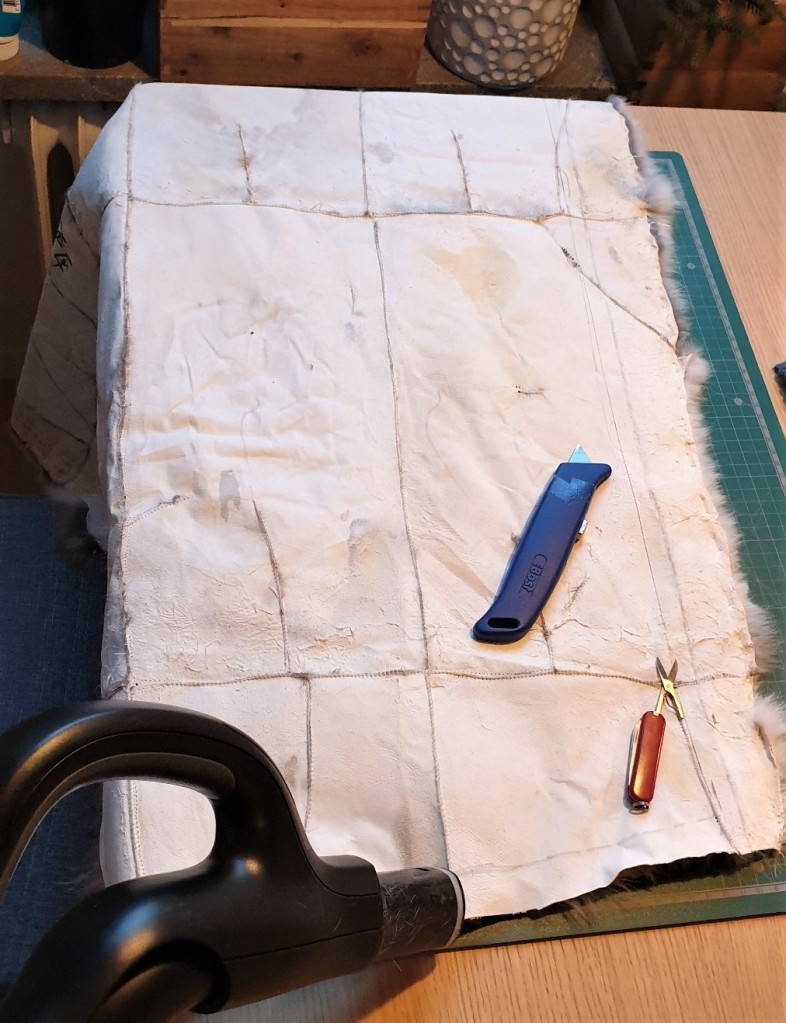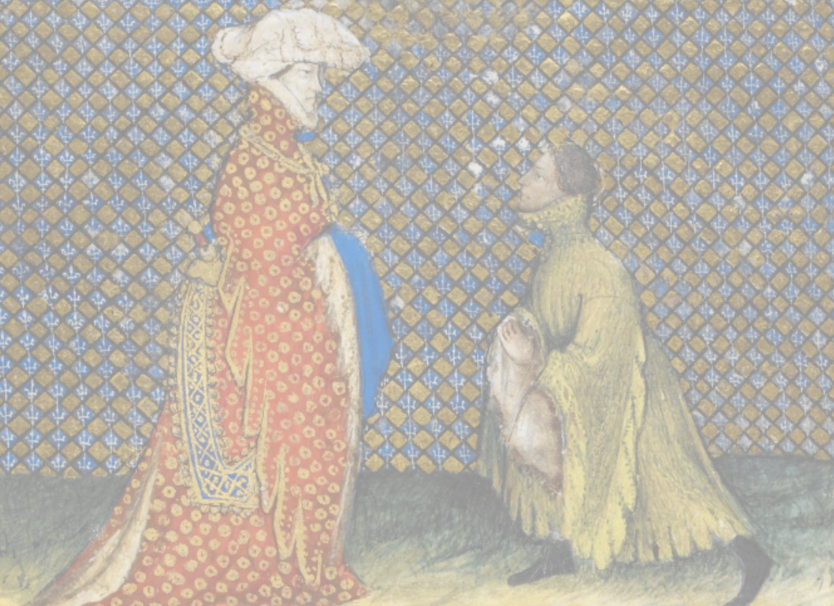99% of houppelandes in manuscripts are lined with fur, giving the necessary weight to achieve the right draping, especially if the outer fabric was a lightweight silk. As the houppelande was an outer garment, the fur would also provide warmth to its wearer.
The fur lining usually extended all the way out to the dagging edge (if there was one). In most manuscripts, the lining is also visible at the collar and lower hem, as well as flashed at slits on the lower half of the garment.






Jean Creton’s is a humbler man. His manuscript only gives us a hint of the lining, at the sleeve opening. Most of it is obscured by what’s likely a white wrist ruffle. The lining appears to be brown, and is most likely fur.
For most houppelandes with dagged sleeve opening, both the outer fabric (the facing) and the lining (the fur) is dagged, and fastened to each other. However in Jean Creton’s case, the fur lining does not appear to be dagged. It seems to end where the fabric dagging starts, not extending all the way out to the dagging edge. This appearance is best achieved by making the lining as long as the outer fabric, and then folding the lining back in on itself. If this is not done, the flesh side of the lining would show between the dagging rather than the desired fur side.
Like the outer fabric sleeve, the lining sleeve should be made with an overhanging/draping adjustment, meaning that one half of the sleeve should be slightly bigger and one half should be slightly smaller. Otherwise the result will have a baggy draping.

Choice of fur
A wide range of animals were used for lining, such as ermeline, fox, beaver, squirrel and rabbit. Rabbit was not the choice of the affluent or nobility. However, in the modern era, rabbit is the most affordable option that can be found in brown color. European rabbit originated from Western France and the northern parts of the Iberian Peninsula. Until it was brought over from France, rabbit was relatively rare in medieval England, and possibly had a higher status there compared to mainland Europe. Rabbit was farmed for meat and fur. Rabbit ended up being my choice for lining the sleeves (and collar).
The best option would be dedicated lining fur, as it will be lighter and have shorter fur compared to those designed to be worn as an outer layer. Some used/second hand fur sellers can be found online, which would be the best choice for animal and planet welfare. The most convenient option is to procure fur plates (sometimes called skin plates) from China. Fur plates are skins already cut and sewn together. For rabbit, plates are offered in mosaics of 9 skins, with dimensions 55-60 cm x 110-120 cm. To line only the sleeves, 4-5 such plates are necessary.
When cutting fur I recommend:
- Consider the direction of the hairs when tracing the pattern so that they fall downwards
- Using a carpet knife rather than scissors for cutting. From the flesh side, cut almost through the skin, then tear by hand
- Wearing a simple surgical face mask when cutting (stray hairs can agitate the respiratory system)
- Having a vacuum cleaner nearby to quickly remove all cut, stray hairs
- If the flesh side of the fur feels dry, consider greasing/moisturizing it with hand cream. This is especially important in seams



Lämna en kommentar